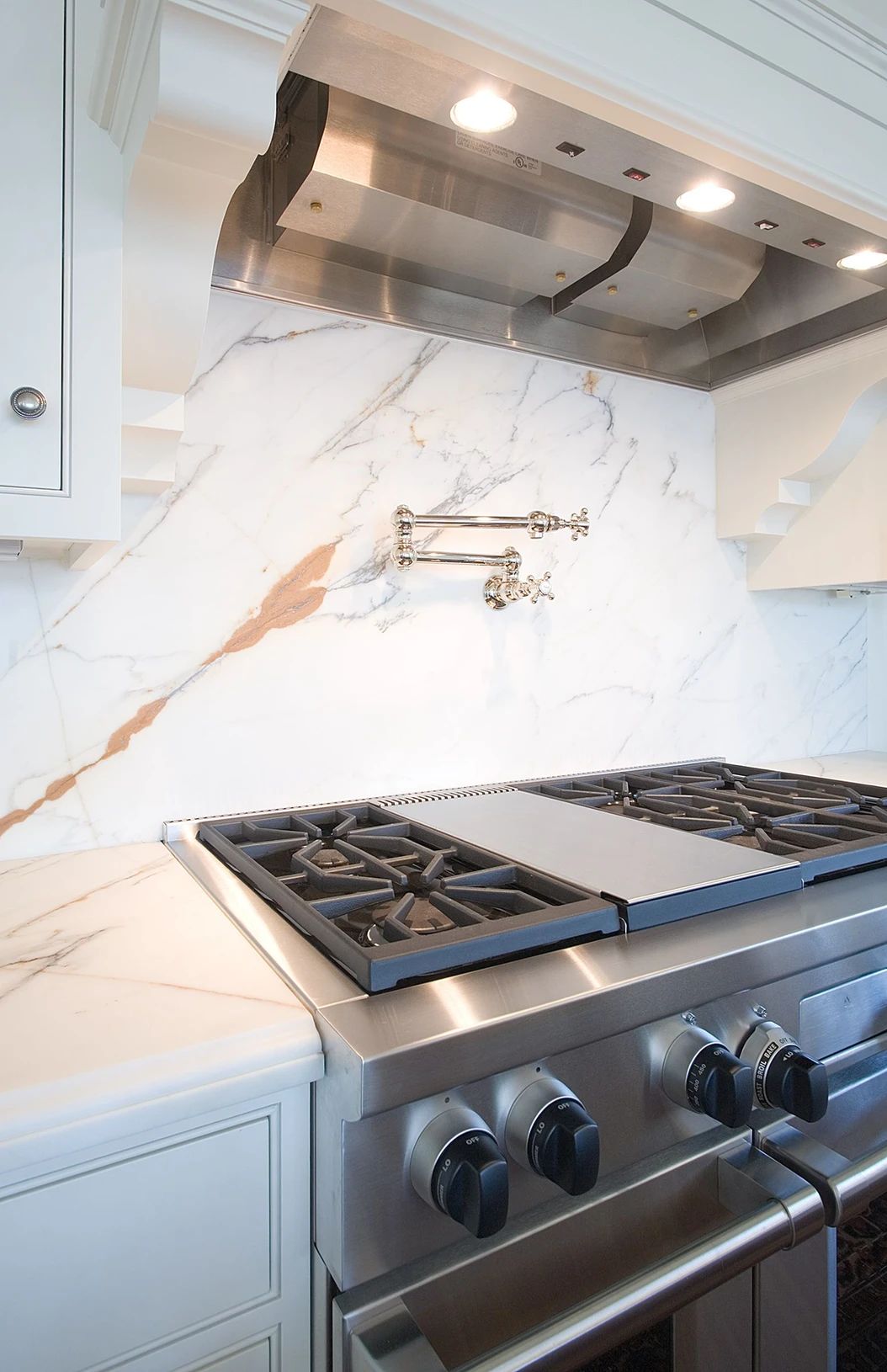Using the same material for your backsplash as your natural stone countertops can create a cohesive and aesthetically pleasing look in your kitchen or bathroom. This design approach is often referred to as a “continuing backsplash” or a “full-height backsplash.” Here’s what you need to know about this design concept:

Material Consistency: The main idea behind a continuing backsplash is to use the same type of natural stone as your countertops to create a seamless transition between the two surfaces. This approach works well with various types of natural stone, such as granite, marble, quartzite, soapstone, or even slate.
Seamless Design: When you use the same material for both the countertops and the backsplash, it eliminates the visual interruption that grout lines in tile backsplashes can create. This seamless design gives your kitchen or bathroom a more harmonious and sophisticated appearance.
Enhanced Aesthetics: A continuing backsplash allows the natural beauty of the stone to shine through without any contrasting elements. This can be particularly striking when you have unique veining, patterns, or colors in your natural stone, as it becomes a focal point in the space.
Easy Maintenance: One practical advantage of having a continuing backsplash is that it reduces the number of seams and joints where dirt, grime, or moisture can accumulate. With fewer areas for potential grout staining or mold growth, maintaining and cleaning the surface becomes easier.
Cost Considerations: While a continuing backsplash can look stunning, it may involve more material and labor costs compared to traditional tile backsplashes. Natural stone can be more expensive than ceramic or porcelain tiles, and fabricating and installing a full-height slab require skilled professionals.
Edge Profiles: When using a natural stone slab for the backsplash, you can choose different edge profiles to complement the overall design. Popular edge profiles include square, beveled, bullnose, or ogee edges. Your fabricator can help you decide which one best suits your taste and space.
Thickness: Standard countertops are typically around 1.25 to 1.5 inches thick, while backsplash slabs can be thinner, around 0.75 to 1 inch. However, the thickness can be customized according to your preference and the design requirements.
Sealing: Since both the countertops and backsplash will be made from the same natural stone, ensure that the material is properly sealed to protect it from stains, moisture, and other potential damage. Regular maintenance and resealing, as recommended by the manufacturer or installer, will help preserve the stone’s beauty and longevity.
Remember that when working with natural stone, it’s essential to use a reliable supplier to source your material and hire experienced professionals for fabrication and installation. They will ensure precise measurements, proper cutting, and a seamless installation for your continuing backsplash, making it a stunning and enduring feature in your living space.
